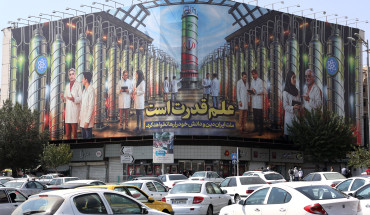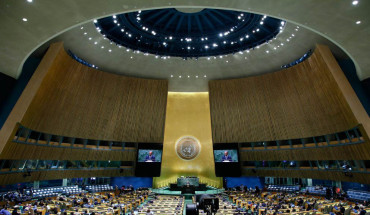This essay examines migration from the Iranian coastal region of the Persian Gulf to the nearby Arab countries. At the center of this research are questions of cross-border relationships, the construction of transnational spaces in border migration, and strategies for maintaining networks in both the home and host countries. The transnational space connecting the Iranian coastal region and the Arab countries resembles other cases of “border migration.” However, in the Iranian case the transnational spaces of migrants’ lives have to be situated within the long historical relationships and shared culture between Iran and the Arab countries.
Early waves of emigration from the Arab countries to Iran, and vice versa, since the middle of the 18th century led to the creation of Iranian communities in the Arab countries. The members of these communities developed and maintained dense and narrow networks to their home villages on the Iranian coastline. The geographical proximity, the shared history, and the resulting transnational spaces contribute to the position of privilege experienced by the Iranian migrants in the Arab countries today, in contrast to those migrants coming from South and Southeast Asia.
This essay examines present-day forms of migration,[1]with a particular focus on “the process by which immigrants forge and sustain simultaneous multi-stranded social relations that link together their societies of origin and settlement.”[2]The research for this essay draws primarily from ethnographic fieldwork in the Iranian province of Hormozgan, particularly the district of Gavbandi,[3]conducted during numerous research field trips between 1977 and 2007.
Bureaucratic Structures of Migration between Iran and the Arab States
Before the 1960s, emigration from Iran was not subject to rigid bureaucratic regulations. In the 1970s, the ease of movement between Iran and the Arab countries came to an end, and stricter visa and immigration regulations were imposed. Until this point, the geographical and political border was barely perceptible to the coastal inhabitants, and the strong affinity within the Arab-Iranian space was emphasized. As a consequence of the first migratory waves in the first half of the 20th century, a very strongly interconnected Iranian community emerged in the Arab countries. These communities and networks facilitated continued interactions between their members and those left behind in Iran and contributed to the realization of the flexible forms of migration that exist today among most Iranian migrants living and working in the Arab countries of the Persian Gulf.
With the political changes in Iran in 1979, the Arab countries imposed ever stricter controls on the entry of Iranians. Earlier, the coastal inhabitants had not been asked about their origin and nationality, as Iranian workers were urgently needed. However, nowadays they are required to provide details about their region of origin and their length of stay.
Despite the tightened procedures for migration, the flow of labor from Iran worked in favor of the Arab countries, especially the private sector employers and those states with very small local populations such as Qatar and the United Arab Emirates (UAE). In fact, the UAE provided incentives to Iranians interested in relocating. As the migrants tell it, Shaykh Zayed, then President of the UAE and ruler of Abu Dhabi, personally promoted the immigration of Iranian coastal inhabitants to the UAE. He invited them to settle on the island of Delma. In promoting this migration, Shaykh Zayed and other officials assured the potential migrants that they would be integrated as “natives” into the societal hierarchy of the Arab Emirates since their language as well as their identity was Arabic. They were to come and bring with them as many emigrants as possible. Shaykh Zayed personally and publicly assumed responsibility for their well-being.
Occupations of the Iranian Migrants in the Arab Countries
Today’s migrants from the Iranian coastal region are predominantly men who leave their families behind and commute between their home villages and their workplaces. The decision to stay long-term or for several years only develops when the migrants have sampled various jobs and can then evaluate the effect of their absence on their homes. The migrants frame their perception of everyday life in the Arab countries within the dichotomy between host country and home village. They view the Arab countries as modern and wealthy, but without natural space. In contrast, they see the coastal villages in Iran as undeveloped and poor, but rich in nature. Despite the modernity and wealth of the Arab cities, the migrants’ lives are usually confined to narrow living quarters, hard work, and limited leisure time. What leisure time they do have they spend almost exclusively with their Iranian room or flatmates.
The migrants, particularly the Arabic-speaking groups, explain that working and living in the Arab countries is not like living in a completely foreign country. They find the customs, traditions, and modes of dress in the Arab countries to be similar to those in the Iranian coastal villages. In addition, since many of the Iranian migrants join relatives already living in the Arab countries, they are able to retain many aspects of their lifestyle and behavior patterns. Socializing takes place primarily with other members of the Iranian community, and it is in this context that special events and religious holidays are celebrated. These celebrations often feature Iranian foods and Iranian musicians invited from Iran.
Transnational spaces are evident in public and commercial contexts. Many of the businesses created by Iranians in the Arab countries engage in activities oriented, at least in part, toward Iran. Markets, called bazar e irani (the Iranian Bazaar), offer a range of Iranian imports, including foodstuffs, handicrafts, and mass produced products. These markets are spaces that span national borders and facilitate transnational social relations.
An important distinction among the Iranian residents in the Arab countries is between those who have citizenship in the host country through naturalization and those who are officially and formally temporary migrants. Until recently, citizenship was granted to outsiders only through special, personal arrangements with local rulers. It is still quite difficult to acquire citizenship, even after 20 to 30 years of residence. Those naturalized Iranians, called movatten, have privileges that distinguish them from other Iranian migrants. As citizens, they are entitled to benefits in housing, healthcare, and education offered by the state. Despite these benefits, naturalized citizens are not viewed as equal to those born into the Arab tribal society. Those are the “true Emiratis” or “real Qataris.” Naturalized citizens do not always receive equal rights, and only a few of them have ever achieved key political roles. Yet, their status is significantly different enough from the other migrants to be a salient and sometimes tense social boundary.[4]
Visiting the Home Village
Periodic visits to the home village take place at least every two years, but some migrants return more dependant upon their employment arrangements. Many migrants return more often now that they can travel by air. The short flight is much easier than the long and tiring journey by boat. The family reunion has become a ritual. When communication back and forth was limited to letters and the infrequent phone call, the return of a migrant was an event for the whole village. The returnee had to stay at home for several days to receive visitors. Neighbors asked for news of their family abroad, and the returnee delivered letters and tapes from the migrants and shared many stories. Gifts, considered a greeting from “the other side,” constituted an important part of the return ritual.
Only those who have been able to build up a life in Iran can think of ending the cycle of migration and return permanently to their villages. The return is especially profitable for those who have acquired some skills during their time as a migrant and can apply these in business when they return. They may be able to open a repair workshop, a carpentry business, or go into construction. New credit facilities and state subsidies and incentives now encourage this sort of investment by returnees. For example, improved roads for the transport of goods into the interior and high state subsidies for the agricultural sector have made investment in agriculture much more lucrative. With these new subsidies, the migrants have become more active and are trying to establish themselves through manual jobs and commerce while at the same time continuing their migratory lifestyle.
Conclusion
From the above we may conclude that all my Iranian interview partners acknowledged their economic dependence on their earnings in the Arab countries. Education, local community development, and medical care are facilitated through the financial support that the migrants give to their home villages. However, I am suggesting that the mutual interdependence of the economic players on both sides of the Persian Gulf is caused mainly by the common regional experience and memory that is creating a transnational space in which new forms of affinity and solidarity are being developed. It is this deep feeling of belonging together and the special forms of solidarity that are at the root of transnational relationships enhancing migratory movements.
[1]. Regarding the history of Iranian migration to the Arab countries, see S.R. Nadjmabadi, “The Arab Presence on the Iranian Coast of the Persian Gulf’, in L. Potter, ed., The Persian Gulf in History (New York: Palgrave Macmillan, 2008), pp 129-145.
[2]. N. Glick Schiller, L. Basch, and C. Blanc- Szanton, “From Immigrant to Transmigrant: Theorizing Transnational Migration,” Anthropology Quarterly, Vol. 68, No. 1 (1995), pp. 48-63.
[3]. In 2008 the name of Gavbandi was changed to Parsian. As the presented material refers to the years before that date, I use the old name Gavbandi.
[4]. S. Nagy, “Making Room for Migrants, Making Sense of Difference: Spatial and Ideological Expressions of Diversity in Urban Qatar,” Urban Studies, Vol. 43, No. 1 (2006), pp. 1-19.
The Middle East Institute (MEI) is an independent, non-partisan, non-for-profit, educational organization. It does not engage in advocacy and its scholars’ opinions are their own. MEI welcomes financial donations, but retains sole editorial control over its work and its publications reflect only the authors’ views. For a listing of MEI donors, please click here.












